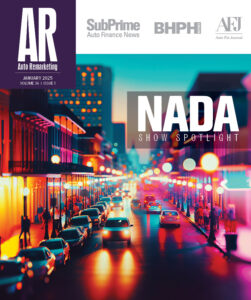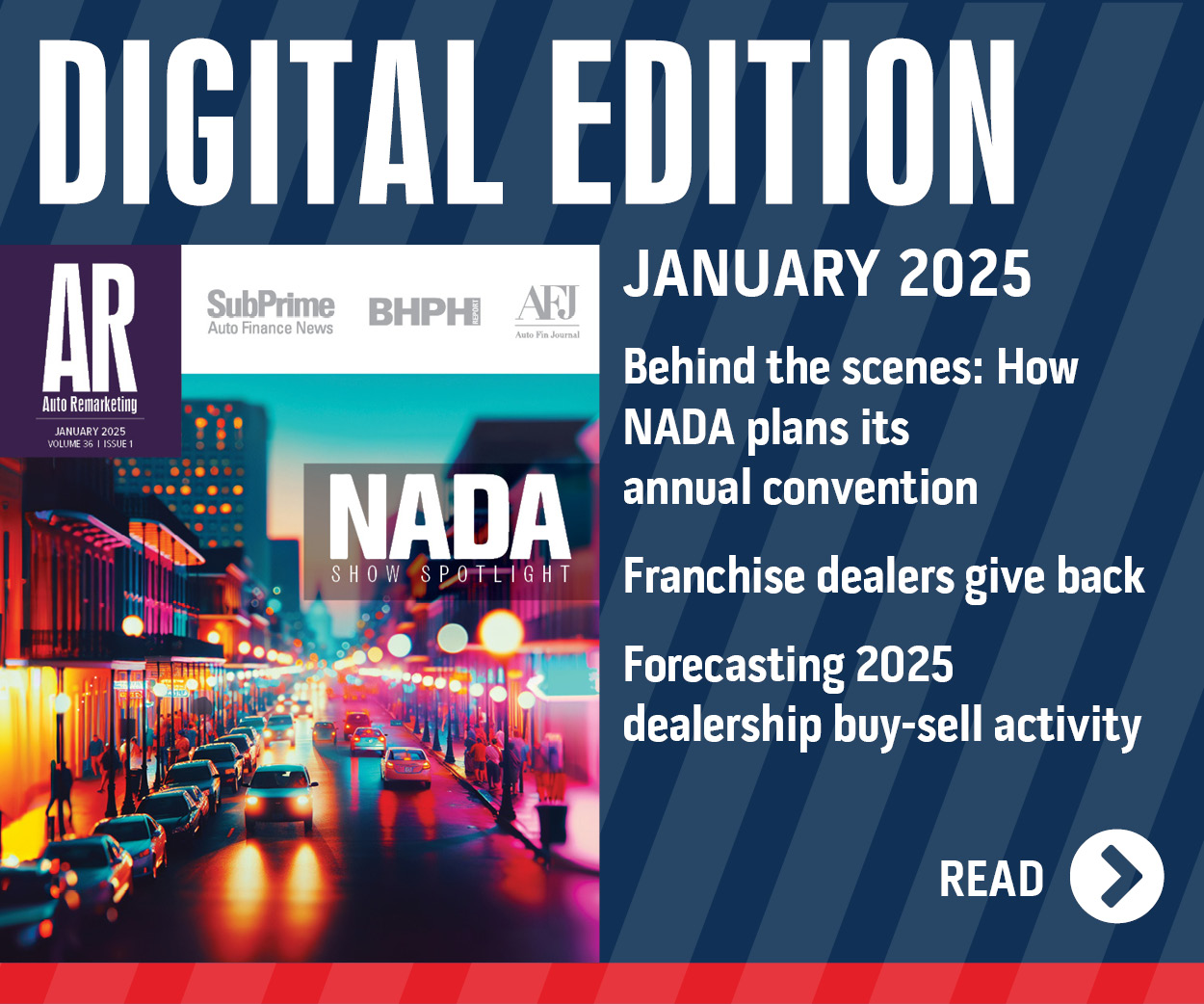NADA UCG: Poor Economy Continues to Push Buyers to Used Vehicles

What might sound like depressing economic news for consumers actually could be uplifting topics for used-vehicle dealers.
Jonathan Banks, executive automotive analyst for NADA Used Car Guide, explained why the recent drumbeat of faltering employment levels and wavering consumer confidence will likely only continue to push potential buyers over to the used department rather than new-retail showrooms.
“As the cadence of depressing economic news increases, many are wondering what the near- to mid-term impact will be to new- and used-vehicle demand,” Banks began in the September edition of Guidelines, NADA UCG’s regular industry update.
“During times of economic duress, used-vehicle demand isn’t as negatively affected by reduced consumer confidence because used vehicles become an attractive lower-cost substitute for new vehicles,” he continued.
“As a result, lower consumer confidence shifts demand from the new-vehicle market to the used-vehicle market,” Banks went on to say.
Even in pockets where the local economy might be faring better, buyers are still heavily considering a used-vehicle purchase.
Marshall Hebert, Louisiana’s state director to the National Automobile Dealers Association, recently told Auto Remarketing that both the used- and new-vehicle departments at his family dealership are buzzing. Hebert explained how Town & Country Dodge Chrysler Jeep is seeing the benefits of an enormous natural gas discovery near his store in Shreveport, La.
“We can’t complain. Things are really good for us right now,” Hebert shared.
And if the local economy isn’t so rosy, Banks is not expecting demand for used vehicles to slow until possibly the latter part of the year.
“At the height of the financial crisis in late 2008/early 2009, used-vehicle demand fell about 30 percent relative to January 2008, while new-vehicle demand fell an even more dramatic 45 percent (adjusting for seasonality and holding prices constant),” Banks recollected.
“Many of the concerns at play three years ago are once again coming to the forefront as bad economic news becomes more amplified,” he surmised. “As a result, we expect to see an increasing percentage of consumers in need of a vehicle shift their search over to the used-vehicle market.
“As we move deeper into the fourth quarter however, we foresee favorable used-vehicle prices and incentive increases — primarily from Japanese manufacturers — luring more consumers back to the new-vehicle market,” Banks went on say.
The NADA UCG analyst pointed out incentives on many car and CUV segments are still relatively low which “provides an opportunity for manufacturers to stimulate additional sales without creating negative implications for brand strength, profitability, and used vehicle prices.”
Banks added, “the ongoing strength in used demand joined with the severe erosion in supply that we’re set to experience over the next 12-plus months should continue to fortify the stalwart position of used values for the foreseeable future.”
Discussion about August Wholesale Price Movement
Looking at the overall landscape, NADA UCG indicated AuctionNet wholesale prices experienced a mild softening in August.
Analysts discovered solid demand for pickups and SUVs was not enough to offset slackening demand for passenger cars with the performance of each being traced back in large part to the reduced volatility of fuel prices.
“Additional downward pressure was applied to both car and vans prices by way of off-rental volume, which hit the market in larger quantities towards the end of the month as rental fleets divested themselves of 2010 model-year units retained for a longer period than usual as a result of Japanese production concerns,” Banks explained.
"After accounting for changes in mileage and mix, we continue to see strength in the wholesale market with prices for all vehicle types up considerably on a year-over-year basis,” he added.
Relative to July, NADA UCG noted AuctionNet price movement ranged from 2.3-percent drop for passenger cars to 1-percent increase for CUVs and SUVs.
Meanwhile, pickups ticked 0.6 percent higher, while vans were off by 1.1 percent.
Looking at specific segments, NADA UCG said compact car prices fell significantly compared to the previous month with drops ranging between 2.4 percent and 6.3 percent depending on model year.
Analysts said midsize cars followed closely behind with prices falling between 3 percent and 4.8 percent.
“These above average drops came as little surprise given the 7-perent drop in fuel prices since May and the considerable run up in used prices witnessed in the first half of the year,” Banks asserted.
NADA UCG determined truck and utility segments performed much better due to the ongoing erosion in supply.
Depending on the model year, analysts found large pickup prices fell 2.5 percent or less month-over-month, noting they have actually increased moderately for the 2006 model year. They also said large SUV prices fared even better by falling 2.1 percent or less.
Banks went on to highlight that midsize utilities and pickup prices also remained stout, dropping about 1 percent on average, while midsize van prices gave back some of the year’s earlier gains by falling up to 4.6 percent.
“Collectively, luxury segment prices remained resilient in the face of ongoing economic concerns, as more cost-conscious consumers in the market for a luxury vehicle increasingly look to the used market as a more palatable alternative to new,” Banks explained.
Looking ahead through the end of September, NADA UCG expects used prices to buck the accelerating downward trend normally expected at this time of year.
With an average drop of 2.1 percent, analysts’ value reductions for compact and intermediate car segments are less severe than the 2.5-percent drop witnessed in August’s edition.
They also projected large pickup and SUV value changes for September are essentially equal to the moves seen in August, dipping 0.4 percent and 0.7 percent respectively
NADA UCG added midsize utility and van drops are projected to be slightly more aggressive at a decline of 1.2 percent.
Banks pointed out luxury segment value reductions average 1.5 percent with luxury midsize units such as the BMW 5-Series dropping the most at around 2 percent.
Recap of August New-Vehicle Performance
After delving into various parts of the used-vehicle space, NADA UCG touched on how the new-vehicle market is doing.
Although new-vehicle sales are well off the 13-plus million pace seen at the beginning of the year, analysts highlighted the tally recorded last month was “one of few economic bright spots in an otherwise dark month.”
NADA UCG recapped that August new-vehicle sales reached 1.07 million units, which was 1-percent greater than July’s tally and an 8-percent improvement over last August.
Banks noted aggressive incentive spending and moderating fuel prices once again saw truck sales outpace those of cars by a score of 53 percent to 47 percent.
He also acknowledged that while August’s SAAR of 12.1 million was down slightly from July’s figure of 12.2 million, it marked a 5-percent year-over-year increase and was the second month in a row where the SAAR was above 12 million.
“With a month end days’ supply of just 49, August’s sales would arguably have been better had this figure been closer to the 60 days considered ideal,” Banks estimated.
“Generally speaking, brands with an adequate days’ supply enjoyed the greatest year-over-year lift, while sales for supply challenged brands lagged,” he continued.
On the domestic side for example, Banks pointed out Chrysler, Ford and General Motors all realized double-digit sales increases.
“Combined Chrysler/Jeep sales grew by an outstanding 45 percent,” Banks said. “Not coincidentally, inventory for each manufacturer ended the month at 59 days or better.”
Conversely, NADA UCG conceded Japanese brand inventory continues to suffer from the effects of March’s natural disasters and new sales were compromised as a result.
Analysts recounted supply-constrained Honda (31 days) and Toyota (35 days) saw sales fall once again to the tune of 25 percent and 14 percent, respectively, while sales for better stocked Nissan (50 days) grew by 22 percent.
“Hyundai and Kia sales continued to grow on a year-over-year basis; however, sales retreated somewhat from July as unrelenting consumer demand has taken a heavy toll on available inventory,” Banks stated.
“Including Subaru, Korean brand days’ supply is the lowest in the industry at 21 days, or almost 40 days back from the preferred 60 days,” he continued.
Banks went on to say that in large part, luxury brand sales continue to improve even in the face of “unshakeable economic uncertainty” as Audi, Mercedes-Benz and Volvo all realized considerable sales increases relative to last year.
“Although sales for BMW were a wash from a year ago, the manufacturer has a sizable year-to-date lead over rivals Mercedes-Benz and Lexus, a position it should retain through years’ end if their 33 days of supply doesn’t erode much further,” Banks surmised.
“Clearly economic worries are placing a significant degree of downward pressure on new-vehicle sales, however 2011’s total yearend mark will also be heavily influenced by inventory changes over the course of the next four months,” he projected.
Free NADA UCG Webinar Set for Today
Whether they’re selling units from a domestic or foreign automaker, NADA UCG believes it has a tool to help dealers appeal to the youngest potential buyers — Generation Y.
NADA UCG is orchestrating a free Webinar at 2 p.m. ET today titled, “Appraising Vehicles for Generation Y Buyers.” It’s going to be led by Stu Zalud, director of dealer services for NADA UCG. Zalud is responsible for presenting at industry events and contributing to the development of products and services to meet changing dealer needs
This Webinar is intended to help dealers improve their customer’s trade-in experience, by having a good, clear appraisal process.
Zalud believes the Gen Y customer will account for 40 percent of the vehicle-buying population by 2012.
“Their mindset is changing the scope of the used car trade-in process,” Zalud stressed.
“This process heavily influences whether a customer will buy a new car from a dealer,” he continued. “Starting with a transparent trade-in process, based on current market conditions, goes a long way to ensuring satisfied customers and stronger dealer profits.
Zalud plans share strategies to help dealers:
—Understand the mindset of the Gen-Y consumer.
—Handle a used-car market that has turned transparent.
—Work with consumers who research trade-in values before coming to the dealership and arrive with incorrect information.
—Put key market data at your fingertips with appraisal tools, such as NADA AppraisalPRO.
Zalud’s previous experience includes more than 30 years as a GM dealer in Cleveland and Hilton Head, S.C. Furthermore, he served on various NADA boards and as chairperson of both the Greater Cleveland and Ohio Automobile Dealers Associations. He also served a five-year term as a member of Ohio’s Dealer Licensing Division.
Dealers can sign up for the free Webinar here.

 View The Latest Edition
View The Latest Edition

